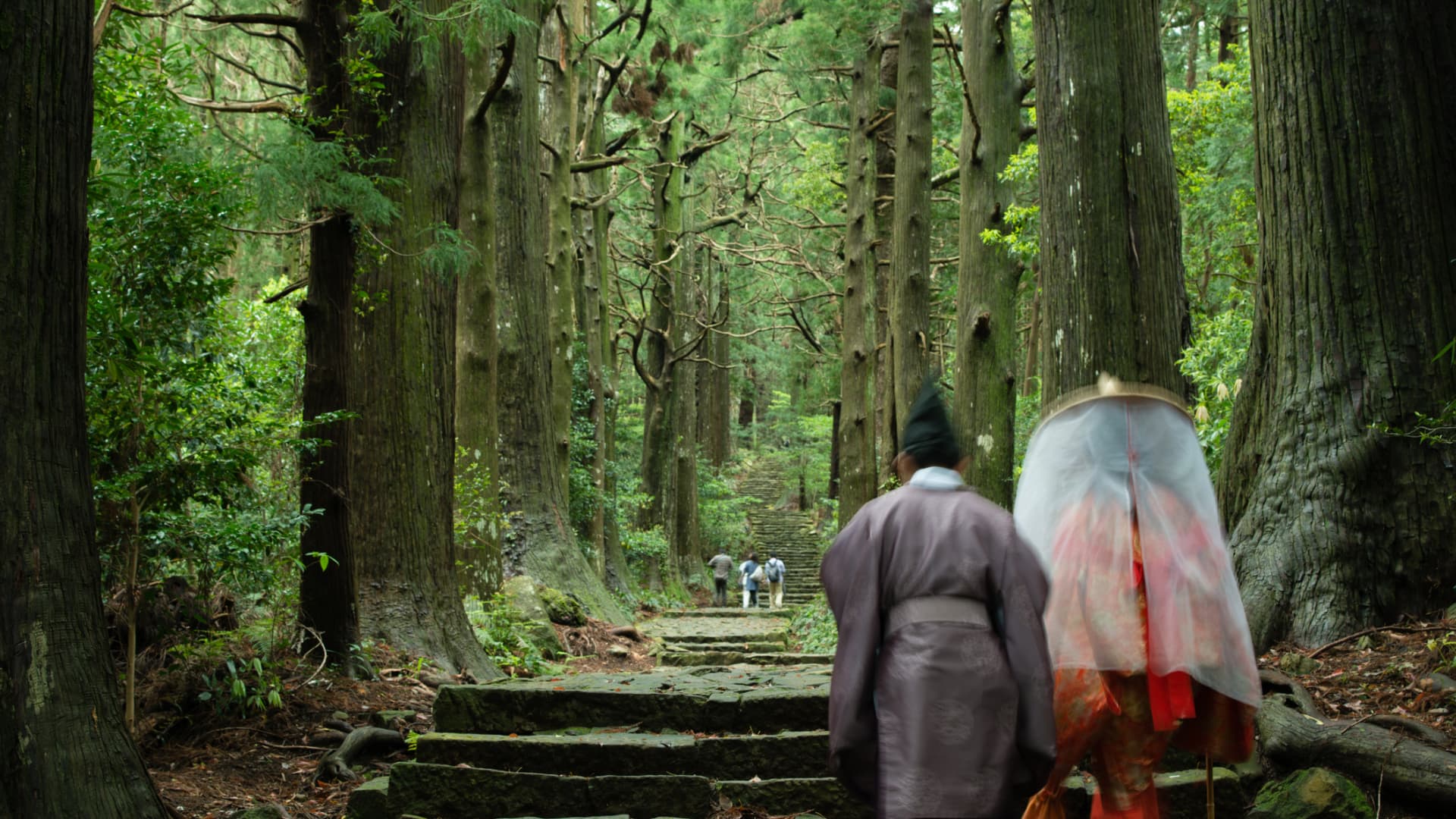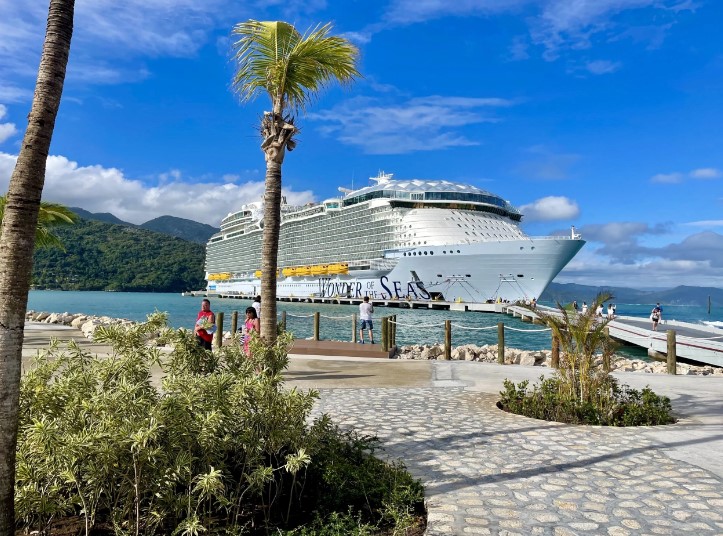Japan wants travelers to go beyond the country’s iconic tourist sites — and consider spending their yen in lesser-known locations.
The government-backed Japan Tourism Agency selected 11 destinations as part of a “model tourism” project to get “high-value-added” inbound travelers to visit different parts of the country, according to a press release.
The 11 destinations vary from regions to cities to mountain ranges, but all have one thing in common: They aren’t yet on most tourists’ radars.
As the JTA explained, according to a CNBC contributor translation: “High-value-added travelers make up only about 1{0b5b04b8d3ad800b67772b3dcc20e35ebfd293e6e83c1a657928cfb52b561f97} of all foreign visitors to Japan, but account for about 11.5{0b5b04b8d3ad800b67772b3dcc20e35ebfd293e6e83c1a657928cfb52b561f97} of [inbound] spending, mostly in metropolitan areas. Attracting these tourists to rural areas could contribute to regional revitalization.”
CNBC Travel takes a look at what each of the 11 spots has to offer travelers — whether or not they’re wealthy.
Eastern Hokkaido
The highlight of the east side of Hokkaido, Japan’s northernmost island, is Shiretoko National Park, which shows Japan’s great outdoors at its most rugged and wild. Visitors in the summer can hike up the 1,661-meter (5,450-feet) Mount Rausu or go for more leisurely treks in bear country around the Shiretoko Five Lakes.
Shiretoko National Park in eastern Hokkaido juts out into the Sea of Okhotsk.
Azuki25 | Istock | Getty Images
Alternatively, travelers can brave biting cold temperatures for snowshoe tours in winter or icebreaker cruises through the drift ice along the coastline of the Sea of Okhotsk in spring.
Mount Hachimantai
Straddling the borders of Akita and Iwate prefectures, this mountainous plateau delivers especially stunning views during the fall in late September and October. Travelers can enjoy it through hiking trails or a scenic drive on the Hachimantai Aspite Line.
Mount Hachimantai in fall.
Agustin Rafael C. Reyes | Moment | Getty Images
It’s also home to a collection of small hot spring hamlets and villages, where travelers can enjoy traditional ryokan inns and mineral-rich baths, including mud baths at Goshogake Onsen and open-air baths under starry night skies at the mountainside Toshichi Onsen.
Nasu
The Nasu Kogen highlands in Tochigi Prefecture, to the north of Tokyo, have long been a popular retreat for Tokyoites thanks to their cooler summer temperatures and attractive natural scenery. Japan’s Imperial family has had a villa here since the 1920s.
Nasu is home to a valley with Jizo statues, which are often seen wearing red bibs or caps meant to protect the souls of children.
Makoto Takada/a.collectionrf | Amana Images | Getty Images
Beyond hot springs and traditional inns, activities on an overnight trip here could include a farm visit, hiking or even shopping at the sprawling Nasu Garden Outlet mall.
Hokuriku
This region bordering the Sea of Japan is home to the prefectures of Fukui, Toyama, and Ishikawa, and its star attraction is Kanazawa — a city that offers much of what makes Kyoto so popular, with fewer crowds.
Women in the district of Higashi Chaya in Kanazawa, Japan.
The Washington Post
Kanazawa’s highlights include the historic Higashi Chaya geisha district and Nagamachi samurai district, as well as the Kenrokuen garden and crafts such as gold-leaf work and Kaga-yuzen silk-dyeing. High-end traditional inns, like Asadaya, offer a culturally immersive stay.
Matsumoto and Takayama
These two cities in the Japanese Alps are rich with tradition. In Matsumoto, there’s Matsumoto-jo, one of the best-preserved feudal castles in the country. And in Takayama, picturesque Old Town plays backdrop to spring and fall festivals that involve parades of towering floats decorated with gold leaf, lacquer and mechanical dolls.
A street in Takayama.
Traumlichtfabrik | Moment | Getty Images
Dating back to the Edo Period (1603-1867), the streets of Old Town are home to highly regarded regional sake. For tastings, stop by Funasaka or Harada breweries, located opposite each other in charming old buildings on the quaint street of Sanmachi Suji.
Tottori and Shimane
On the west side of Japan’s main island, these neighboring prefectures offer travelers the opportunity to go off the beaten track, through sites like Izumo Taisha shrine, the award-winning gardens of The Adachi Museum of Art, UNESCO-designated Iwami Ginzan silver mines, and the mellow hot spring town of Yunotsu.
Iwami Ginzan, an underground silver mine in Shimane Prefecture that ended operations in the 1920s.
Mixa | Mixa | Getty Images
Ise-shima
Tradition runs deep in Mie Prefecture’s Ise-Shima area, from Japan’s most sacred shrine (Ise Jingu) to the female Ama divers who free-dive for seafood along the rugged coast — and with whom travelers can have lunch at diving huts like Amagoya Osatsu Kamado.
A female diver, called “ama” in Japan, displays a sea urchin she caught at the bottom of the sea off the coast of Shima in Mie prefecture.
Antoine Boutheir | Afp | Getty Images
Ise-shima is arguably the “model destination” most ready to welcome the JTA’s wealthy targets. Not only is it home to the plush Shima Kanko Hotel, which hosted the Group of Seven’s Iseshima Summit in 2016, it also welcomed – in the same year – Aman’s uber-luxury Amanemu resort in Iseshima’s Ago Bay.
Southern Nara and Wakayama
“The city of Nara is well known, but fewer tourists travel to the southern part of the prefecture that bears the same name, nor into Wakayama Prefecture to its south.
Both are home to the UNESCO World Heritage-designated Kumano Kodo pilgrimage routes, a network of millennia-old trails that connect the three great Kumano Sanzan shrines and the sacred mountainside town of Koyasan.
The pilgrimage routes of Kumano Kodo in Wakayama, Japan.
Tororo | Stone | Getty Images
The trails cut through mountain ranges and deep forest, and occasionally skirt the Kii Peninsula’s dramatic coast, offering travelers a chance to connect with nature and try rare experiences like a night at temple-lodging in Koyasan.
Setouchi
This region covers coastal parts of Hiroshima and other prefectures surrounding the Seto Inland Sea. Outdoor types can cycle on the Shimanami Kaido, a 70-km route that connects Japan’s main island to the island of Shikoku via a collection of islets and dizzying bridges that deliver magnificent views.
The port city of Onomichi.
Thanyarat07 | Istock | Getty Images
At the northern end of the route, the historic port city of Onomichi is well worth a night for its retro vibe, maze of sloping side streets, and historic temples. On a tranquil island along the route, there’s also Azumi Setoda, a renovated traditional residence turned luxury boutique hotel.
Kagoshima, Aso and Unzen
The island of Kyushu in western Japan feature everything from active volcanoes to glimpses of samurai culture. Around Mount Unzen — a volcano that last erupted in the 1990s — are hot springs and hiking trails, while Mount Aso — last eruption 2021! — is a vast caldera on a grassy plateau that is also great for hiking.
Mount Sakurajima, the symbol of Kagoshima, has minor eruptions several times per day.
Chiara Salvadori | Moment | Getty Images
As for samurai culture, stop by Sengan-en in Kagoshima, a stately home that blends Japanese, European and Chinese influences with a 12-acre landscaped garden where part of the scenery is Sakurajima, a smoldering volcanic peak that emits frequent reminders of its potential for devastation.
Okinawa and Amami
In 2021, Amami-Oshima Island, Tokunoshima Island, the northern part of Okinawa’s main island, and Iriomote Island were given joint UNESCO Natural World Heritage status for their biodiversity and endemic wildlife.
The forests of Amami-Oshima Island.
Ippei Naoi | Moment | Getty Images
While Iriomote is mostly dense jungle and mangrove forest, Amami is better known for its white sandy beaches. These islands have a culture distinct from the rest of Japan — they’re a melting pot of Japanese and Chinese influences, having been part of the independent Ryukyu Kingdom for centuries until 1879.






More Stories
Exploring the “Otaku Island” of Enoshima
Japan eases travel with eVisas
Should you visit Japan or South Korea?